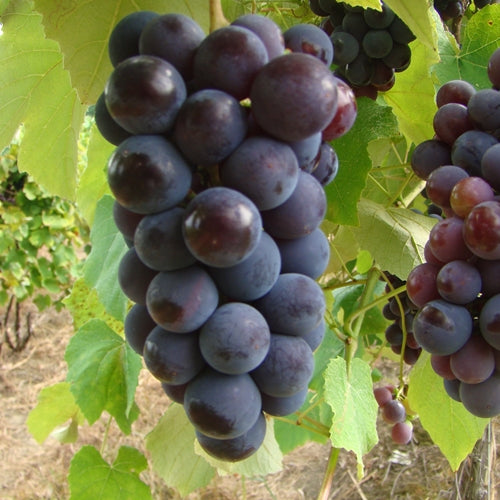
ATTENTION
We cannot ship vines outside the United States or to the following states: California, Idaho, Washington, or Oregon.- American Varieties
- Hardiness Zone 5
- Hardiness Zone 6
- Hardiness Zone 7
- Hardiness Zone 8
- Wine
- Table
USDA Hardiness Zones categorize regions by average winter temperatures, guiding growers to choose plants suited for their climate. Learn More
Top Wire Cordon is arguably the most efficient training system for grapes, especially for procumbent or downward growing cultivators, especially those not prone to late season fruit rots due to shading of the fruiting zone. Summer labor is much less than that required with Vertical Shoot Positioned (VSP) training as shoot positioning and leaf pulling are generally not required. Learn More
To learn more about the types of diseases susceptibile on our plants, click here.
Black Rot
Moderately susceptibleDowny Mildew
Moderately susceptiblePowdery Mildew
Moderately susceptibleBotryitis
Slightly susceptibleSusceptibility Meanings
Highly susceptible: Prone to disease and requires intensive management.
Moderate susceptible: May develop disease but manageable with regular care.
Slightly susceptible: Naturally resistant with minimal risk, needing basic care.
Grape Color
Blue, BlackPrimary Use
Table, WineWine Color
Red, SparklingVariety Origin
Said to have been developed in South Carolina in 1816.Parents
UnknownPseudonym (Tested As)
Not ApplicableYear Released
UnknownHarvest Season
Mid SeasonSulfur Sensitivity
Highly susceptibleVine Vigor
VigorousGrowth Habit
TrailingSuggested Distance Between Vines
6 ft - 7 ft - 8 ftBud Break
Mid-Season with ConcordRoyalty
No